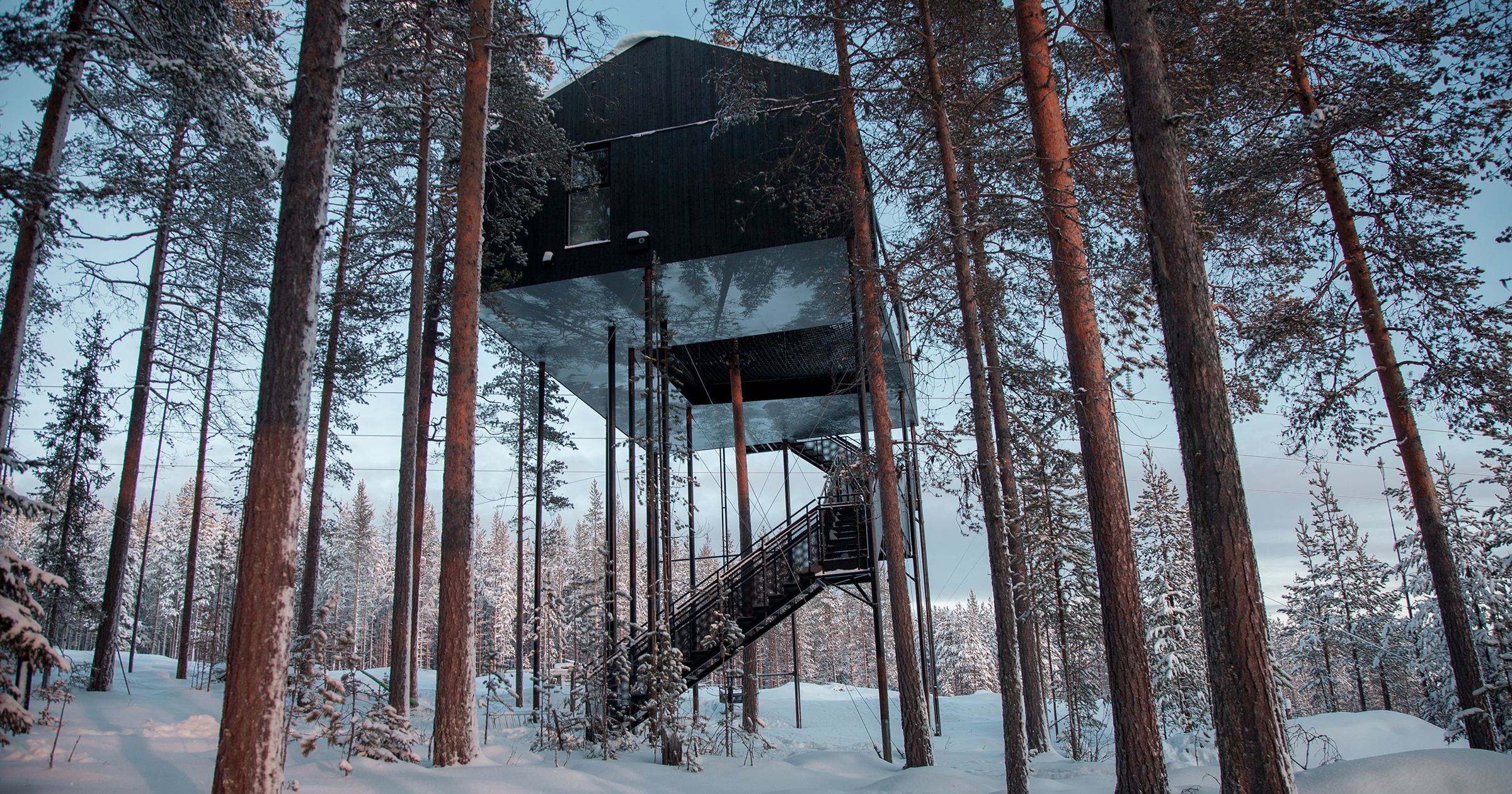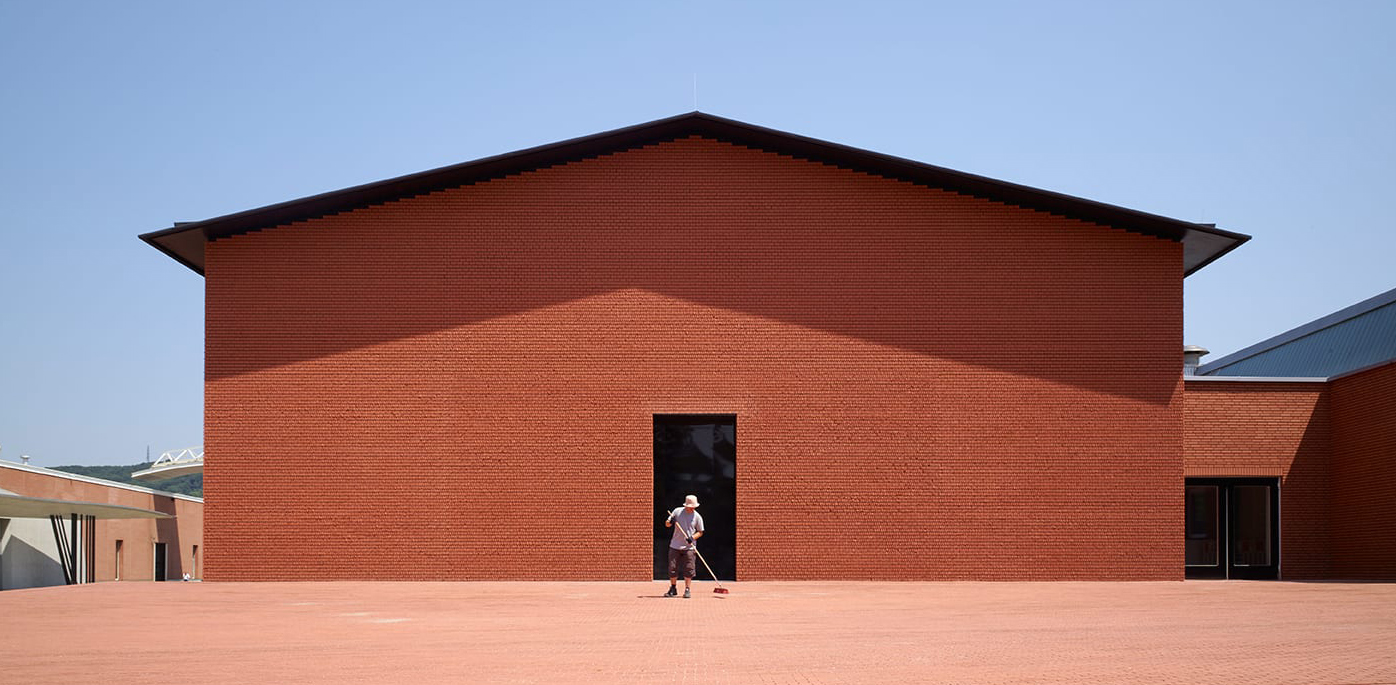Hale Lana – A family retreat on Hawaii’s Big Island, Hale Lana takes the form of several canopy-like pavilions linked by elevated wooden lanais and a series of gardens. The home takes a position at the ecotone line between the heavily landscaped area, and the expansive ocean views which stretch to Haleakalā volcano on nearby Maui. The home’s name, Hale Lana, translates to “floating home” – the client called it this because a key design goal was a high degree of transparency between inside and outside.
Architizer chatted with Tom Kundig, FAIA, RIBA, Principal and Owner at Olson Kundig to learn more about this project.
Architzier: What inspired the initial concept for your design?
Tom Kundig: The clients envisioned this home as a place to gather with extended family and friends, while still feeling comfortable for smaller groups. The home is designed to expand and contract, with the activity of the interior spilling outside, while at the same time providing privacy and spaces for refuge. That indoor/outdoor connection was also extremely important to the clients, as they wanted to feel connected to the natural landscape even while inside.
Hale Lana is a very Hawaiian-style home – a simple rectangular form with deep roof overhangs. The large cantilevered roofs shade the lanais and allow you to take cover, out of the sun, but still return easily to that sunshine. The home takes advantage of the cooling breezes – the sort of perfect, velvet air Hawaii is known for – and gathers those breezes through the interior spaces.

© Olson Kundig
This project won in the 10th Annual A+Awards! What do you believe are the standout components that made your project win?
Hopefully what people recognize across my body of work is that each project is distinct and influenced by the client and its specific context – and Hale Lana is no different. The client wanted a home that would fit the Hawaiian landscape but also be very tailored, with a lighter, somewhat European sensibility. In particular, the precise, knife-edge roof lines on each of the pavilions are certainly a departure from the more tectonic kind of architecture of some of my other work – the beams, the columns, the expression of construction craft. Instead Hale Lana is almost ephemeral, a home that seems to float within the landscape.

© Olson Kundig
What was the greatest design challenge you faced during the project, and how did you navigate it?
The home’s design is very technical. The long, razor-sharp lines of the roof required an extremely high level of precision and accuracy. The success of that piece of the design speaks to the great partners we had on this project, including the general contractor, Dowbuilt, and timber fabrication consultant, Spearhead, who worked with us to get it just right.

© Olson Kundig
How did the context of your project — environmental, social or cultural — influence your design?
For me, a project’s context is the most important considerations, and the project design emerges from those environmental, social, cultural, even historical influences. Hale Lana uses large areas of transparency and literal openness to engage with that big landscape outside. That transparency allows you to see through the home to the landscape beyond. Removing barriers between the built environment and the natural environment fosters that sense of seamlessness, and open-air circulation pathways between pavilions underscore the idea that your experience of the home is directly tied to your experience of the landscape.

© Olson Kundig
What drove the selection of materials used in the project?
Materials have been selected for their natural properties, including durability and strength, because this can be a tough environment. Hale Lana incorporates a variety of woods across the exterior, including cedar siding and ipe decking, that are especially well-suited to this kind of environment. Woods selected for inside use bring warmth and texture to the interiors, as well as a sense of craft that’s handmade and finely detailed. The interiors use a mix of rift cut white oak (media room paneling, master closets), charred / shou sugi ban oak (powder room / bathroom paneling), ipe (kitchen cabinets) and cedar (cabana and outbuilding powder room paneling). The stone walls are bluestone lava, which relate to the natural rocks across the site.

© Olson Kundig
What is your favorite detail in the project and why?
I really enjoy the way the experience of the home seamlessly moves between each of the different pavilions across the property, from the very intimate and private areas to the more exposed, communal spaces. You can customize how you live on the site, depending on climate conditions or who you’re with or how your mood changes throughout the day.

© Olson Kundig
How important was sustainability as a design criteria as you worked on this project?
Sustainable design and building performance are design drivers for all of Olson Kundig’s projects. For Hale Lana, we incorporated a range of passive conditioning techniques to ensure that the home would be comfortable without being sealed off from the surrounding landscape and climate. Generous roof overhangs and shady lanais mean these spaces remain comfortable and usable on very warm days, while also moderating solar heat gain throughout interior spaces. The roof also picks up some of the architectural vernacular of other local buildings, which are designed to gather the prevailing trade winds and breezes, then keep them moving in and through.

© Olson Kundig
How have your clients responded to the finished project?
The clients love the finished home and have ended up spending even more time there than they anticipated. They have told us that the main pavilion, pool and cabana are some of the most-used areas of the home, especially because the whole family and their friends can be together there. Their kids love to play in the sport court, as well.

© Olson Kundig
How do you believe this project represents you or your firm as a whole?
Every project I work on circles back to my philosophy about understanding and responding to the context. I think it is important not to compete with the landscape – built or natural – and to acknowledge the place of architecture within the larger context. My role as architect is to create something small within that larger context, which is more beautiful than anything we could design.

© Olson Kundig
How has being the recipient of an A+Award evoked positive responses from others?
It’s certainly allowed us to make connections and build relationships with other collaborators within the industry. The reach of the Architizer platform combined with the annual books that showcase all of the winners means the A+Award wins have a pretty big impact. It’s an honor to be a part of that, and we’re so thankful for every opportunity to engage more deeply with Architizer.

© Olson Kundig
How do you imagine this project influencing your work in the future?
That’s a great question. I often say that everything I design is a shelter – whether it’s a home or a winery or an office building. Projects like Hale Lana really help you understand what “shelter” means at its root: making a place for human beings to be human, while deeply connected to their surroundings.

© Olson Kundig

© Olson Kundig
Team Members
Tom Kundig, FAIA, RIBA, Design Principal; Todd Matthes, Project Manager; Katherine Ranieri, Project Architect; Gregory Nakata, Architectural Staff; Debbie Kennedy, LEED® AP ID+C, Interior Design; Amanda Chenoweth, Kathy Hanway, Maresa Patterson and Crisanna Siegert, Interior Design Staff
Consultants
Dowbuilt, General Contractor; Kona Wai Engineering, Civil Engineer; MCE Structural Consultants, Structural Engineer; WSP, Mechanical and Electrical Engineer; David Y. Tamura Associates, Landscape Architect; Niteo Lighting, Lighting Design; Kai Pono Builders, Pool Consultant; Spearhead Inc., Steel & Timber Fabrication Consultant
Products and Materials
- Cedarland Forest Products – Siding – Vertical cedar board
- Fleetwood – Wood doors – 3070
- Vitrocsa – Windows – TH+
- Cedarland Forest Products – Ceilings – Tight joint cedar
- Dining Table (Solid single walnut slab top, powder coated formed steel base; inspired by the soft shape of a surfboard in section) – Custom designed by Olson Kundig, manufactured by Chadhaus
- Dining Chairs (rosewood) – Niels Otto Moller 71 chair, circa 1951, by J.L. Moller Mobelfabrik (dealer: Galerie Zeitraume)
- Sideboard (rosewood) – Henry Rosengreen Hansen Sideboard, circa 1960, by Brande Mobelfabrik (dealer: The Modern Warehouse)
- Chandelier – Branching Disc Chandelier by Lindsey Adelman Studio
- Sectional Sofa – Miloe Sectional by Cassina
- Area Rug (mohair) – Moroccan Area Rug by Jan Kath (dealer: Stacey Logan)
- Richard Carter – Custom powder room sink
- Royal Mosa – Tile – 30 THIRTY – 227V- 23.5″ x 23.5″
- Wilsonart – Laminate – Black 1595
- Caesarstone – Solid surface – 2003 Concrete
- Stone Source – Stone slab – Basaltina
- Additional stone slab – Absolute Black granite; Stellar White marble; Inca Gray basalt; and Puka lava solids
- Elizabeth Dow – Wallpaper – “Curacao”
- Phillip Jeffries – Wall covering – Japanese Paper Weave, Item# 3572 Neutral Nuance
- Phillip Jeffries – Wall covering – Manila Hemp, Item# 5231 Hint of Mint
- Phillip Jeffries – Wall covering – Manila Hemp, Item# 5280 Putty
- Timorous Beasties – Wallpaper – Meridian Palm Superwide
For more on Hale Lana, please visit the in-depth project page on Architizer.









 Hale Lana
Hale Lana 


